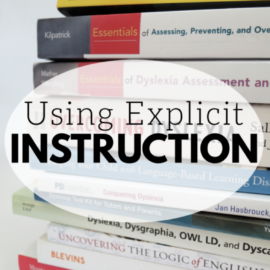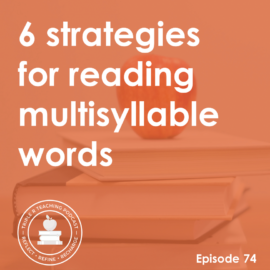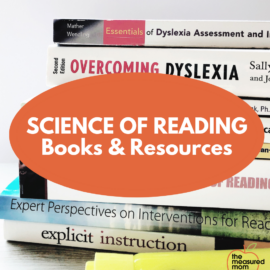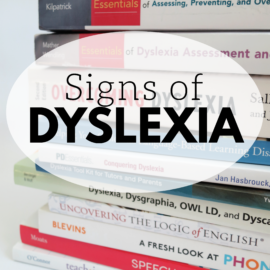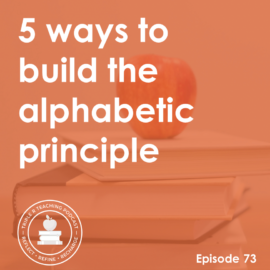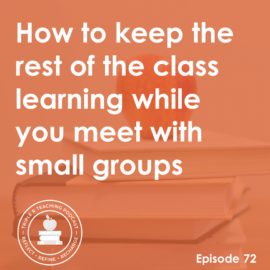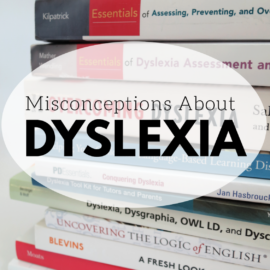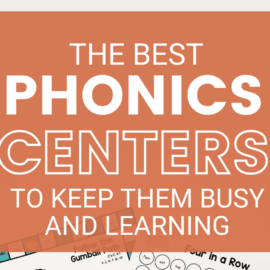How do you teach students with dyslexia? With explicit instruction. But what IS explicit instruction anyway? In their book, Anita Archer and Charles A. Hughes tell us that explicit instruction is systematic, direct, engaging, and success oriented. If you have a few minutes, check out this helpful video from Anita Archer. It feels a little weird to use the word explicit when talking about teaching because ... Read More
6 ways to build fluency
TRT Podcast#75: 6 Ways to build fluency Without fluency, our students will struggle to comprehend what they read. Here are six ways to build fluency in a variety of settings. Let me know if you try the last one! Listen to the episode here Full episode transcript Related resources ... Read More
6 strategies for reading multisyllable words
TRT Podcast#74: 6 strategies for reading multisyllable words Do you have students who struggle to read longer words? These six strategies will give you the tools you need to help. #4 is my favorite! Listen to the episode here Full episode transcript Related resources ... Read More
Recommended Science of Reading books
The science of reading is the body of research that has been conducted on how we learn to read and write. This research has been conducted over decades, but only recently has much of it been introduced to today's classroom teachers. It's important to note that as more research is conducted, we may need to revise our previous understandings. In addition, there is disagreement when it comes to translational ... Read More
Signs of dyslexia
Let's uncover the signs of dyslexia. So far we've addressed dyslexia myths and defined exactly what dyslexia is. Here's a quick refresher: Dyslexia is the most common learning disability. It is "characterized by difficulties with accurate and/or fluent word recognition and by poor spelling and decoding abilities. These difficulties typically result from a deficit in the phonological component of ... Read More
5 Ways to build the alphabetic principle
TRT Podcast#73: 5 ways to build the alphabetic principle The alphabetic principle is the understanding that printed letters represent sounds - it sounds simple, but not all kids grasp this concept. Without it, they can't learn to read! Here are five simple ways to build the alphabetic principle. Listen to the episode here Full episode transcript Related resources ... Read More
How to keep the rest of your class learning as you meet with small groups
TRT Podcast#72: How to keep the rest of the class learning while you meet with small groups Keep the rest of the class busy AND learning with these easy-prep, effective literacy center ideas! Listen to the episode here Full episode transcript Related resources ... Read More
Busting 12 dyslexia myths
Dyslexia is the most common learning disability, yet many people know very little about it - dyslexia myths abound! Today we're going to do some dyslexia myth busting! Myth #1: People with dyslexia see letters and words backward, and people with dyslexia always write letters and words backward. This misconception may be the most common, perhaps because it's been around for so long. Dyslexia is not a ... Read More
How to plan and teach small group phonics lessons
TRT Podcast#71: How to plan and teach small group phonics lessons How should you form your phonics groups? How often should you meet with each group? What specific activities should you include in your lessons? We've got the answers in this week's episode! Listen to the episode here Full episode transcript Related blog posts ... Read More
Phonics centers that will keep students busy and learning
I've written about different ways to structure your phonics lessons and meet the needs of all your students. One question remains ... what are the rest of the students doing while you teach small groups? Today I'm sharing ideas for phonics centers! These days I am seeing a lot of criticism of small group teaching, because there is concern about what the rest of the class is doing. There is (legitimate) ... Read More

